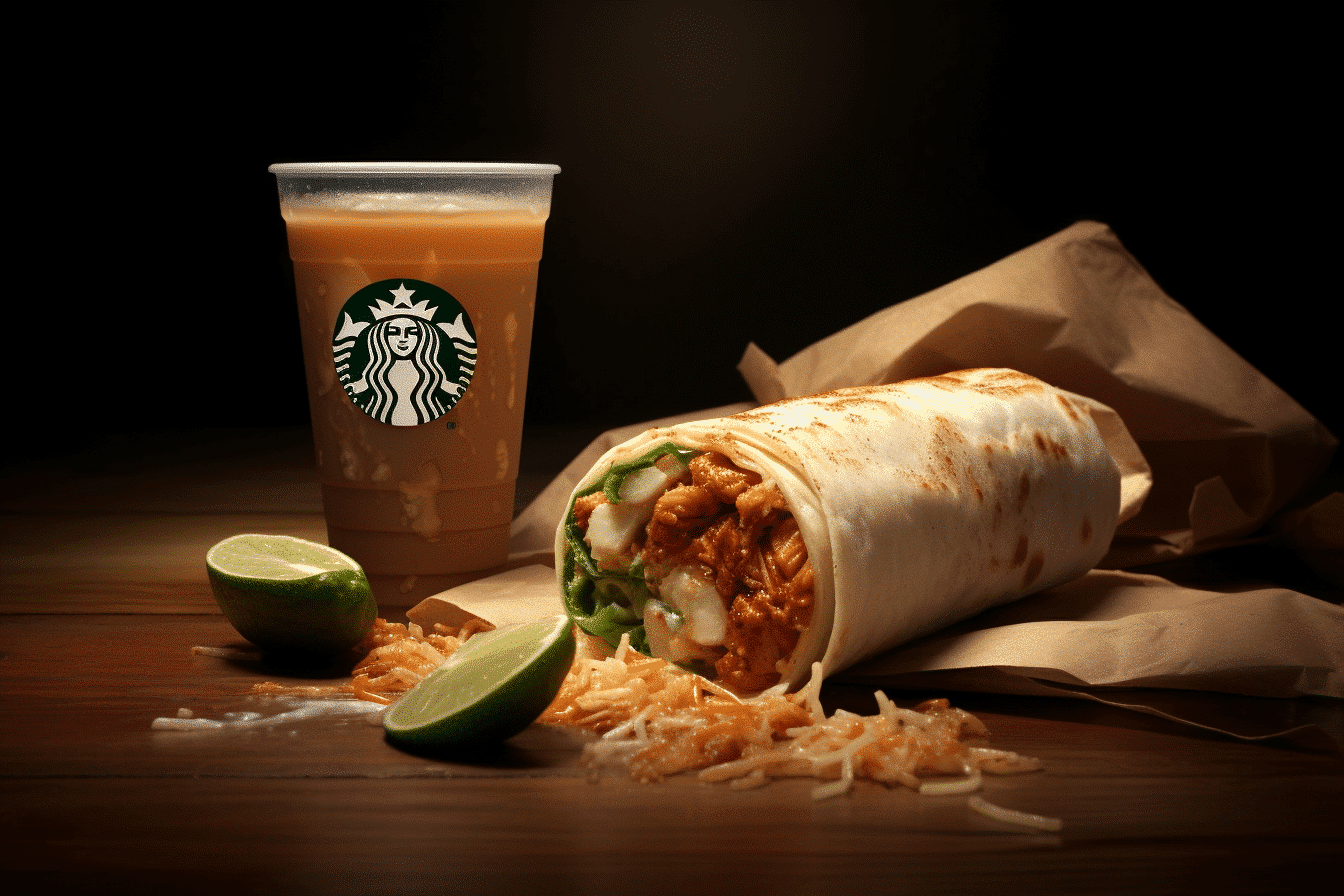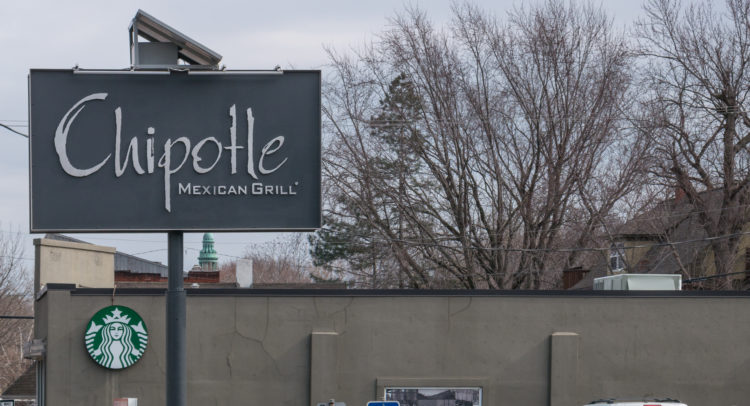The Starbucks and Chipotle Customer Experience

Starbucks and Chipotle, two titans of the food and beverage industry, have cultivated distinct customer experiences that resonate with their respective target audiences. While both brands strive for customer satisfaction, their approaches differ significantly, reflecting their unique brand identities and market positions.
The Starbucks Customer Experience
Starbucks’ customer experience is characterized by its emphasis on personalization, convenience, and community. The brand’s signature coffee drinks, along with its wide array of food options, cater to a diverse customer base seeking a quick and satisfying pick-me-up or a comfortable space to work or socialize.
Key Factors Contributing to Starbucks’ Customer Experience Success
- Personalized Service: Starbucks baristas are known for their friendly and personalized service, often remembering regular customers’ orders and preferences. This creates a sense of familiarity and connection, enhancing the overall customer experience.
- Convenient Locations: Starbucks boasts a vast network of stores, strategically located in high-traffic areas, making it easily accessible to a wide range of customers. This convenience is a key driver of repeat business.
- Comfortable Ambience: Starbucks stores are designed to provide a welcoming and comfortable atmosphere, with comfortable seating, Wi-Fi access, and a relaxed ambiance. This creates a space where customers can linger and enjoy their coffee or food.
- Rewards Program: Starbucks’ loyalty program, Starbucks Rewards, offers customers exclusive perks and discounts, incentivizing repeat purchases and fostering brand loyalty.
Target Demographics for Starbucks
Starbucks’ target demographic is broad, encompassing a wide range of age groups, income levels, and lifestyles. However, the brand’s core customer base consists of young professionals, students, and busy individuals seeking a convenient and affordable caffeine fix.
The Chipotle Customer Experience
Chipotle’s customer experience is built on a foundation of fresh, high-quality ingredients, customization, and a commitment to sustainability. The brand’s focus on fast-casual dining appeals to health-conscious consumers seeking a quick and flavorful meal without sacrificing quality.
Key Factors Contributing to Chipotle’s Customer Experience Success
- Fresh Ingredients: Chipotle uses fresh, high-quality ingredients, sourced from sustainable farms whenever possible. This commitment to quality resonates with health-conscious consumers and sets the brand apart from its competitors.
- Customization: Chipotle’s build-your-own burrito bowls and other menu items allow customers to customize their meals to their liking, ensuring a personalized and satisfying experience.
- Sustainable Practices: Chipotle’s commitment to sustainability, including its use of responsibly sourced ingredients and its efforts to reduce its environmental footprint, appeals to environmentally conscious consumers.
- Digital Ordering and Payment: Chipotle offers a convenient digital ordering and payment system, allowing customers to place orders ahead of time and avoid lines. This streamlined experience caters to the busy lifestyles of its target audience.
Target Demographics for Chipotle
Chipotle’s target demographic consists primarily of young adults and millennials, who are health-conscious, value quality and sustainability, and appreciate the convenience of fast-casual dining. The brand’s focus on fresh ingredients and customizable meals resonates with this demographic, which is increasingly concerned about food quality and transparency.
The Starbucks and Chipotle Business Models

Starbucks and Chipotle, two iconic brands in the food and beverage industry, have carved distinct niches for themselves through their unique business models. While both companies offer a fast-casual dining experience, their strategies differ significantly in terms of product offerings, supply chain management, and pricing.
Business Model Comparisons
The business models of Starbucks and Chipotle diverge in several key aspects. Starbucks focuses on a “third-place” experience, offering a welcoming environment for customers to socialize, work, or relax. Their primary product is coffee, with a wide range of beverages and food items complementing the core offering. In contrast, Chipotle positions itself as a fast-casual restaurant specializing in customizable burritos, bowls, and salads. Their focus lies on providing fresh, high-quality ingredients and a personalized dining experience.
- Product Differentiation: Starbucks offers a wide range of beverages, including coffee, tea, and Frappuccinos, along with a selection of pastries, sandwiches, and salads. Chipotle, on the other hand, focuses on a limited menu featuring burritos, bowls, and salads with customizable options for fillings.
- Customer Experience: Starbucks aims to create a welcoming and comfortable “third-place” environment, encouraging customers to linger and socialize. Chipotle, with its focus on speed and customization, prioritizes a quick and efficient dining experience.
- Target Market: Starbucks caters to a broad demographic, attracting customers seeking a coffee fix, a quick meal, or a place to relax. Chipotle targets a younger, health-conscious audience, emphasizing fresh ingredients and customizable options.
Supply Chain Analysis
Starbucks and Chipotle have adopted distinct supply chain strategies, reflecting their different product offerings and customer expectations.
Starbucks Supply Chain
Starbucks’ supply chain is characterized by its vertical integration and global sourcing. The company controls various aspects of its supply chain, from coffee bean sourcing to roasting and distribution. This allows Starbucks to ensure quality and consistency in its products, while also managing costs effectively.
- Sourcing: Starbucks sources coffee beans from over 30 countries, with a focus on ethical and sustainable practices. The company has established direct relationships with coffee farmers, ensuring fair prices and quality control.
- Production: Starbucks operates its own roasting facilities, controlling the roasting process and ensuring consistent quality. They also have a network of manufacturing partners for other products, such as pastries and sandwiches.
- Distribution: Starbucks has a robust distribution network, with a centralized warehouse system and a fleet of trucks delivering products to stores across the globe.
Chipotle Supply Chain
Chipotle’s supply chain emphasizes freshness and local sourcing. The company prioritizes using high-quality ingredients, often sourced from local farms. This approach allows Chipotle to control the quality of its ingredients and ensure a consistent customer experience.
- Sourcing: Chipotle sources its ingredients from a network of farms and suppliers, with a focus on locally-sourced produce whenever possible. The company has established strict quality standards for its ingredients, ensuring freshness and traceability.
- Production: Chipotle has a limited menu, with most ingredients prepared in-house. This allows for greater control over the quality and freshness of the food.
- Distribution: Chipotle’s distribution network is designed to ensure that ingredients arrive fresh and are delivered to stores on a regular basis. The company utilizes a network of local suppliers and distributors to minimize transportation time and maintain freshness.
Pricing Strategies
Starbucks and Chipotle employ distinct pricing strategies, reflecting their different business models and target markets.
Starbucks Pricing Strategy
Starbucks uses a value-based pricing strategy, charging a premium for its products and services. This strategy is based on the perception that Starbucks offers a unique and premium coffee experience, justifying the higher prices.
“Starbucks is known for its premium pricing strategy, reflecting the perceived value of its brand and the quality of its products.”
Chipotle Pricing Strategy
Chipotle employs a competitive pricing strategy, aiming to offer competitive prices while maintaining high-quality ingredients and a personalized dining experience. The company focuses on providing value for money, attracting customers who are looking for a quick and affordable meal.
“Chipotle’s competitive pricing strategy is designed to attract customers seeking value for money, with a focus on fresh ingredients and customizable options.”
The Future of Starbucks and Chipotle: Starbucks Chipotle

The future of Starbucks and Chipotle, two giants in the food and beverage industry, is a tapestry woven with threads of innovation, evolving consumer preferences, and a dynamic competitive landscape. While both brands have enjoyed remarkable success, they must navigate a path forward that embraces change and anticipates future challenges.
Challenges and Opportunities
The road ahead for both Starbucks and Chipotle is paved with both challenges and opportunities. Each brand must adapt to evolving consumer preferences, navigate economic fluctuations, and stay ahead of the competition.
- Rising Labor Costs: Both Starbucks and Chipotle face increasing labor costs, a challenge exacerbated by labor shortages and rising minimum wages. This pressure necessitates innovative solutions, such as automation and streamlining operations, to maintain profitability.
- Competition: The food and beverage industry is fiercely competitive, with new entrants and established players vying for market share. Starbucks faces competition from specialty coffee shops, while Chipotle contends with fast-casual restaurants offering similar menu items. Staying ahead of the curve requires constant innovation and differentiation.
- Changing Consumer Preferences: Consumer tastes are constantly evolving, with a growing emphasis on health, sustainability, and convenience. Starbucks and Chipotle must adapt their offerings and marketing strategies to cater to these evolving preferences. For example, Starbucks has introduced plant-based options, while Chipotle has focused on sourcing ethically sourced ingredients.
- Technological Advancements: The rise of digital ordering, mobile payments, and delivery services has transformed the way consumers interact with restaurants. Starbucks and Chipotle must embrace these technological advancements to enhance customer experience and optimize operations.
- Economic Fluctuations: Economic downturns can impact consumer spending, potentially affecting sales for both Starbucks and Chipotle. The ability to adapt pricing strategies and offer value-driven promotions can help mitigate these challenges.
Evolving Business Models, Starbucks chipotle
To navigate these challenges and seize opportunities, Starbucks and Chipotle must evolve their business models.
- Personalized Experiences: Starbucks has implemented a loyalty program and personalized recommendations, while Chipotle has introduced digital ordering and customized bowls. This focus on personalized experiences caters to individual preferences and enhances customer engagement.
- Expansion into New Markets: Both brands have expanded into new markets, including international locations. This strategy allows them to reach new customer segments and diversify their revenue streams.
- Diversification of Offerings: Starbucks has expanded beyond coffee, offering tea, pastries, and food items. Chipotle has introduced new menu items, such as plant-based options, to appeal to a wider range of customers.
- Sustainability Initiatives: Both brands are embracing sustainability initiatives, such as sourcing ethically sourced ingredients and reducing their environmental footprint. These initiatives appeal to environmentally conscious consumers and enhance brand image.
- Technology Integration: Starbucks and Chipotle are leveraging technology to enhance customer experience and optimize operations. This includes digital ordering, mobile payments, and delivery services.
Starbucks chipotle – Starbucks and Chipotle, both fast-casual giants, are constantly innovating to stay ahead in the competitive food industry. Chipotle, under the leadership of ceo of chipotle , Brian Niccol, has been focusing on digital ordering and delivery to cater to changing consumer preferences, mirroring Starbucks’ own successful digital strategy.
Both companies are also actively exploring new menu items and collaborations to capture new customer segments, keeping them at the forefront of the fast-casual scene.
The Starbucks-Chipotle partnership, a recent venture aimed at expanding both brands’ reach, has been met with mixed reactions. The partnership, however, comes at a time of transition for Starbucks, as new CEO Laxman Narasimhan takes the helm. It remains to be seen how this partnership will fare under Narasimhan’s leadership, but it could be a crucial step in Starbucks’ efforts to remain relevant in a rapidly evolving market.